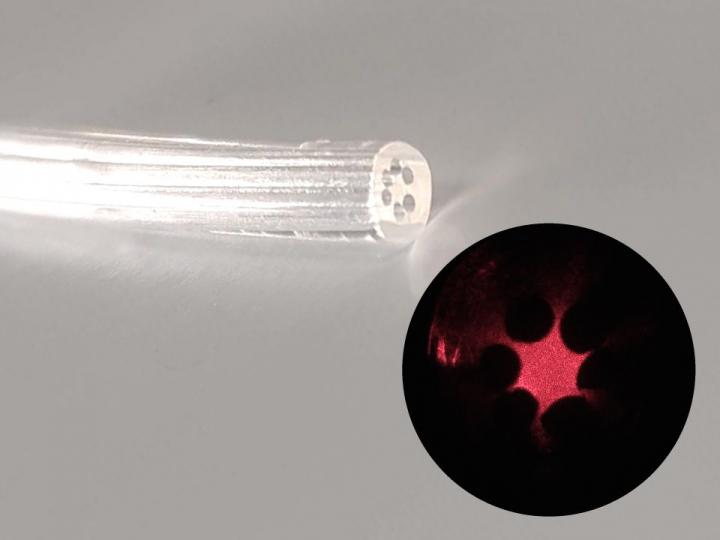SÃO PAULO, Aug. 7, 2020 — Researchers at the University of Campinas (UNICAMP) in Brazil and Gunma University in Japan have designed an optical fiber from agar, the natural gelatin obtained from marine algae. In addition to being edible, the fiber is biodegradable and biocompatible — qualities that give the researchers the ability to use its waveguide for in vivo applications such as imaging, light delivery, and sensing.
The fiber may also play a valuable role in medical settings. A medical professional could potentially insert an endoscope or similar imaging device made from the biodegradable fiber into an organ in the body, which would then naturally absorb the device, reducing many risks associated with medical procedures.
FAPESP (São Paulo Research Foundation) supported the initiative. Professor Eric Fujiwara at UNICAMP’s School of Mechanical Engineering and professor Cristiano Cordeiro at UNICAMP’s Gleb Wataghin Institute of Physics conducted the research with professor Hiromasa Oku of Gunma University.
“To produce the fiber, we poured food-grade agar into a mold with six internal rods placed lengthwise around the main axis,” Fujiwara said. “The gel distributes to fill the available space. After cooling, the rods are removed to form air holes, and the solidified waveguide is released from the mold. The refraction index and geometry of the fiber can be adapted by varying the composition of the agar solution and mold design respectively.”
The researchers designed their fiber in a cylinder with an external diameter of 2.5 mm and a regular inner arrangement of six, 0.5-mm cylindrical air holes around a solid core. The difference between the refraction indices of the agar core and air holes confines light to the system.
There are additional distinct advantages to using agar to manufacture optical sensors, according to Fujiwara, in comparison to using other biodegradable materials such as silk and hydrogels.

Edible, biocompatible, and biodegradable, these fibers have potential for various medical applications. Courtesy of Eric Fujiwara.
“Agar is food-graded, cheap, easy to manipulate, can be used as a culture medium, and presents intrinsic sensitivity to variables like humidity, concentration, and pH,” Fujiwara said.
There is another potential use for the fiber: simultaneous application as an optical sensor and growth medium for microorganisms. Here, researchers would engineer the waveguide as a disposable sample unit containing certain nutrients essential for growth and development. Using a camera or spectrometer to analyze a signal, the researchers would be able to optically sense the immobilized cells in the device.
Prospective applications for this setup, Fujiwara said, would be in monitoring the susceptibility of cells to certain drugs, or their response to environmental changes in real time, because the transmitted light can be measured as it is subjected to external stimuli.
In the testing stage of its research, the team gauged the effectiveness of its fiber in media ranging from air and water to ethanol and acetone, ultimately determining it to be context-sensitive. This makes the fiber suitable for optical sensing, Fujiwara said, because “the gel undergoes structural changes in response to variations in temperature, humidity, and pH.”
The researchers said they have begun the process of improving and refining the fiber’s optical properties. Testing aimed at characterizing its sensing capabilities is underway, and the team said it expects to make the technology available soon.
The research is published in Scientific Reports (www.doi.org/10.1038/s41598-020-64103-3).